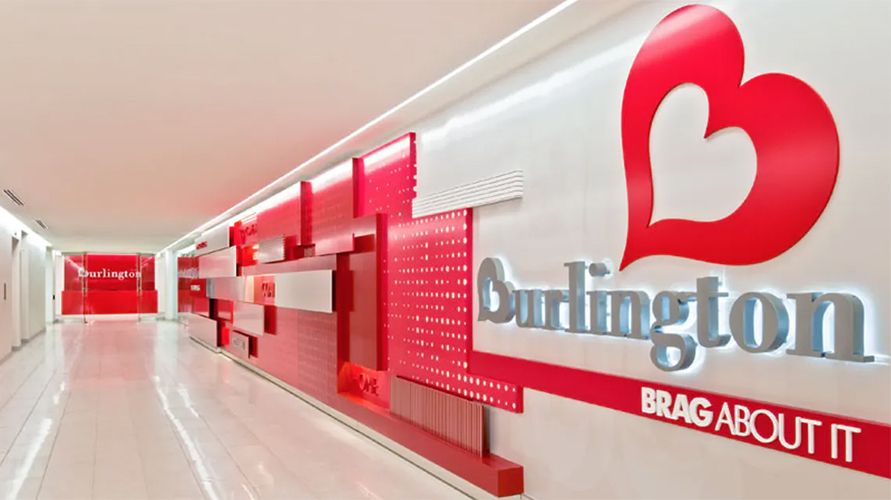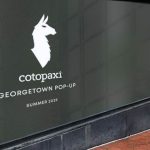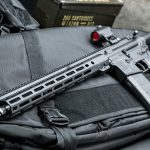Burlington Stores reported earnings fell 24.2 percent in the fourth quarter on flat comp sales. The off-pricer also set a new store target to reach 2,000 stores, up from the previous goal of 1,000 stores.
Michael O’Sullivan, CEO, stated, “We saw comparable-store sales improve sequentially as the quarter progressed, starting with a double-digit decline in November, improving to flat in December and then accelerating to double-digit growth in January. I was pleased with how we navigated this trend and utilized core Burlington 2.0 strategies—chasing sales, buying opportunistically and operating with leaner inventories. Looking ahead, the retail environment is likely to remain unpredictable for some time. We are planning 2021 comparable-store sales conservatively but will manage liquidity to chase sales if the trend is stronger.”
O’Sullivan added, “Today, we are excited to announce the expansion of our store count potential to 2,000 stores from 1,000 stores previously. This new target takes account of the significant market share opportunity that we see ahead of us and of the improvements we are making in our business with Burlington 2.0 and, in particular, the significant reduction in inventory levels and the smaller store footprint that this enables.”
Fiscal 2020 Fourth Quarter Operating Results
(for the 13 week period ended January 30, 2021, compared with the 13 week period ended February 1, 2020)
- Total sales increased 4 percent to $2,279 million, and comparable-store sales were flat. While comparable-store sales were down 10 percent in November due to unfavorable weather, comparable-store sales trends improved significantly thereafter, improving to flat in December and to a 17 percent increase in January, as weather normalized and federal stimulus payments were disbursed.
- Gross margin rate was 42.5 percent versus last year’s rate of 42.1 percent, an increase of 40 basis points.
- Merchandise margins increased 110 basis points, driven primarily by lower markdowns, more than offsetting a 70 basis point increase in freight costs.
- Product sourcing costs, which are included in selling, general and administrative expenses (SG&A), were $143 million in the fourth quarter versus $89 million in last year’s fourth quarter. Product sourcing costs include the costs of processing goods through its supply chain and buying costs. The increase was driven primarily by higher supply chain costs, due to higher wages and COVID-19-related costs.
- SG&A increased $110 million to $705 million for the fourth quarter of Fiscal 2020. Adjusted SG&A was $554 million versus $499 million last year, due to higher store-related and corporate costs, partially offset by lower marketing expense.
- The effective tax rate was 17.1 percent versus 24.0 percent in last year’s fourth quarter. The Adjusted Effective Tax Rate was 20.0 percent versus last year’s fourth-quarter Adjusted Effective Tax Rate of 23.8 percent.
- Net income was $156 million, or $2.33 per share versus net income of $206 million, or $3.08 per share for the fourth quarter last year. Adjusted Net Income was $163 million, or $2.44 per share versus $215 million, or $3.21 per share last year. This decrease in Adjusted Net Income was due primarily to higher product sourcing and COVID-19 related costs.
- Diluted shares outstanding amounted to 67.0 million at the end of the quarter, flat compared with the end of last year’s fourth quarter. From the end of the fourth quarter of Fiscal 2019 through the suspension of its share repurchase program announced on March 19, 2020, the company repurchased approximately 0.2 million shares under the program.
- Adjusted EBITDA decreased $69 million from last year’s fourth quarter to $280 million. Adjusted EBIT decreased $70 million below the prior-year period to $224 million. The decrease in Adjusted EBITDA and Adjusted EBIT were driven by the same factors described above that drove the decline in Adjusted Net Income.
Full Year Fiscal 2020 Results
Total sales decreased 21 percent compared to Fiscal 2019. Net (loss) income decreased $682 million compared to the prior year to ($216) million, or $(3.28) per share versus $6.91 per share last year. Adjusted EBIT decreased by $952 million compared to last year, to $(283) million. Adjusted Net (loss) Income decreased $664 million versus last year to ($170) million, while Adjusted EPS was $(2.57) per share versus $7.35 per share in the prior year.
Inventory
Merchandise inventories were $741 million versus $777 million last year, a 5 percent decrease. Comparable in-store inventories declined 16 percent. This decrease was driven by the company’s strategy of operating with leaner in-store inventories. Reserve Inventory, which includes all inventory that is being stored for release either later in the season, or in a subsequent season, was 38 percent of total inventory at the end of the fourth quarter of Fiscal 2020 compared to 33 percent at the end of the fourth quarter of Fiscal 2019.
Liquidity
The company ended the fourth quarter with $1,857 million in liquidity, comprised of $1,380 million in unrestricted cash and $477 million in availability on its ABL facility. During the quarter, the company paid down the $250 million previously outstanding on its ABL facility, ending the quarter with no outstanding ABL balances.
Share Repurchase Activity
The company suspended its share repurchase program on March 19, 2020. As of the end of the fourth quarter, the company’s share repurchase program, which remains suspended, had $348 million in remaining authorization.
Outlook
Given the uncertainty surrounding the pace of the recovery of consumer demand and the ongoing COVID-19 pandemic, the company is not providing specific sales or earnings guidance for Fiscal 2021 (the 52-weeks ending January 29, 2022) at this time.
The company is providing the following Fiscal 2021 guidance items:
- Capital expenditures, net of landlord allowances, is expected to be approximately $470 million;
- The company expects to open 100 new stores, while relocating or closing 25 stores, for a total of 75 net new stores in Fiscal 2021;
- Depreciation & amortization, exclusive of favorable lease costs, is expected to be approximately $260 million;
- Interest expense, net of non-cash interest of $32 million on convertible notes, is expected to be approximately $80 million; and
- The effective tax rate is expected to be approximately 24 percent to 25 percent.
New Store Target
Based on the smaller store format enabled by Burlington’s 2.0 strategy and the opportunity presented by accelerating retail disruption and industry-wide store closures, the company has increased its long-term store target to 2,000 stores, up from its previous store target of 1,000 stores, which was established in connection with the company’s IPO in 2013. The company operated 761 stores as of the end of the fourth quarter of 2020.
Photo courtesy Burlington
















